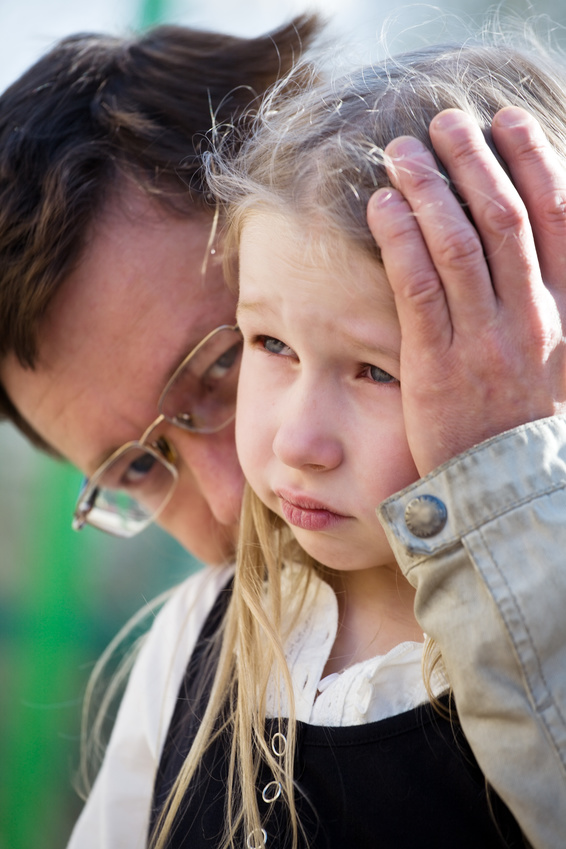Why Kids Whine
Research on whining confirms that it really is the most annoying sound to the human ear – more so than the sound of a screeching table saw or a Vuvuzela football/soccer horn resembling the sound of an elephant. (1) You can witness this first hand as you listen to frustrated parents proclaim to their children, “I can’t understand you when you whine,” or “I don’t speak whine.”
There is a purpose to whining and nature was not ill intended. Whining vocalizations are also found in other mammal species and are part of the instinctive and emotional etchings in the emotional system geared towards eliciting attention from others. In other words, if your child’s whining hijacks your attention system and stirs you up then this sounds about right. Whining is meant to get your attention but the question is why and what do our kids need from us?

The Emotional Driver Behind Whining
When a child is whining their emotional system is stirred up with frustration. Frustration is the emotion of change and it usually indicates a child wants something to change or something to stop – ironically, the same as the parent of that whining, frustrated child! Before tackling ‘what to do’ with a child’s whining we will need to make sense of the frustration that drives it.
Why do kids get frustrated? Because they want something we have said no to – like another cookie, staying up past bedtime, or wanting to play when we are busy making dinner. For the older child the whining may be about getting more screen time or to change our mind. A child can be frustrated because they are feeling sick and don’t have words for it or they had a hard day at school and are overwhelmed by it. The point is – there are too many sources of potential frustration to name and we don’t always have words for these experiences or conscious awareness. We don’t always know what our children’s emotional system is experiencing but we are meant to be cued to caring for it when it needs us most of all. What is clear is when our children are stirred up and frustrated, their whining is a call for parental action.
The problem with statements such as, “I don’t speak whine or can’t understand you,” is that it conveys to a child that you don’t know how to help them or you don’t care to unless they behave in a certain way. Frustration is a hard emotion to control at the best of times. It takes sophistication and strong development in the prefrontal areas of the brain, as well as caring feelings to temper one’s reaction in the face of it. Acting in a mature way when we are frustrated is a challenge for anyone – ask any frustrated parent of a whining child. It is natural for kids to struggle with a civilized response but it isn’t a problem when a 7 year old whines but certainly is when a 21 year old still does.
Coming Alongside and Transforming Frustration
There are two possible outcomes to frustration – we change something for a child or we help them accept what they cannot change. This last path often involves tears but if a child cannot feel their sadness about what cannot change then the whining will likely continue along with other frustrated actions. When we respond to a child who is whining, one of the things we want to avoid is adding to their frustration by letting our own frustration take the lead.
Whining is the emotion of frustration and in order to help draw it out, make room for it, get to the bottom of it, release and quell it, we will need to come alongside it. As Gordon Neufeld states, in coming alongside a child we purposively move ourselves into relationship with their emotions and try to put some words to them. The key issue with whining is we want to focus on the frustration and not the behaviour (which we often don’t want to condone), so as to normalize their feelings.
We can come alongside a child’s desire to see things change and help them effect change wherever we can. For example, we might say, “I can see you are tired and hungry, I am going to help you with that.” Sometimes we will need to come alongside the things that won’t change and normalize their feelings of frustration about this, for example, “I know you want to have more screen time and you are frustrated with my ‘no.’ You will have more screen time tomorrow, it is not going to happen right now and it’s okay to be disappointed about this.” When we are clear about what cannot change we invite a child’s emotional system to surrender their frustration to sadness. This typically isn’t a smooth transition by any stretch of the imagination and may take some time. As a child routinely faces things that are futile and realize they can survive all the no’s in their life, whining should abate around these issues.
 When a child is up against the things they cannot change, it is only sadness that will release the emotional system from the whirring energy of whining. When tears fall, especially when they are invited by adults and acknowledged by them – the energy in the child will shift and the emotion of frustration is brought to rest. In other words, the transformation of frustration into sadness moves a child to accept what they cannot change and how they become increasingly resilient and resourceful.
When a child is up against the things they cannot change, it is only sadness that will release the emotional system from the whirring energy of whining. When tears fall, especially when they are invited by adults and acknowledged by them – the energy in the child will shift and the emotion of frustration is brought to rest. In other words, the transformation of frustration into sadness moves a child to accept what they cannot change and how they become increasingly resilient and resourceful.
It is ironic that in writing this article I experienced two different whining episodes from my own kids. Despite being able to make sense of it through developmental science, I have to confess it still feels like someone is taking a cheese grater to my limbic/emotional system. While knowledge helps buffer my annoyance, it doesn’t quell my stirred up emotional system and that is the whole point. What whining does is it motivates me to get to the bottom of my kid’s frustration and either change what isn’t working for them or help them find their tears about what cannot change. This is not a mistake in human emotional design but is part of the beautiful dance that is meant to tie parent and child together.
Interestingly, as one of my kids started whining, the other one turned to me and pleaded, “Just make her stop will you! That sound, I can’t handle it – she is so annoying!” This leads me to conclude that whining is annoying to everyone except the person doing it. If nature was so intent in ensuring whining grabs our attention, then perhaps we really need to find a way to listen and deal with all that is underneath it.
Reference
(1) Rosemarie Sokol Chang and Nicholas S. Thompson, “Whines, cries, and motherese: Their relative power to distract,” Journal of Social, Evolutionary, and Cultural Psychology 5 (2011): 131–41.
Deborah MacNamara, PhD is on Faculty at the Neufeld Institute and in private practice working with parents and professionals based on the relational and developmental approach of Gordon Neufeld, PhD. She is the author of Rest, Play, Grow: Making Sense of Preschoolers (or anyone who acts like one). Please see www.macnamara.ca for more information or www.neufeldinstitute.org.





